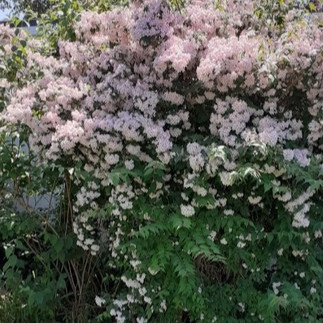April May SPRING GARDENER
- Tony A
- Mar 14, 2024
- 3 min read
Updated: Mar 20, 2024
SPRING GARDENER 2024
APRIL MAY- what a wonderful time of the year with every plant deciding winter is over. Suddenly we are caught unawares with a spurt in plant growth and warmer weather – but where to start in the garden?
TIDY UP all that winter detritus and do essential maintenance of tools - sharpening, cleaning, clearing and airing - sorry to be boring but maintenance should always come first!
SOIL - every garden whatever its size requires healthy soil. Soil is so often taken for granted as everlasting and not requiring maintenance. It is not - soil needs nurturing and especially mulching is really key to keeping weeds down and retaining moisture in hotter days
May I strongly recommend an inexpensive pH meter. Simply stick the probes into moistened soil for an instant guide. These meters give a pH, fertilty and moisture readings at a manual click of the settings. They work easily with a simple to read clear screen.
Check your soil has not become too compacted with heavy winter rain or muddy boots. Lightly rake to introduce much needed oxygen - remember plants breathe (respiration) through their roots and roots require movement to access nutrients and available water.
Top up the soil (mulching) with a dressing of fresh loam (clay/sand/silt mixture) and then lightly dig in the organic –plant –animal compost and manure mulch that contain the living microbes producing the all important nitrogen microbes for a really surprising thank you from your garden plants - just enjoy the rewards as the season progresses.!!
Soil is often so often forgotten, not understood, and therefore neglected but it is soil that contains the vital nutrients that plants depend on. Nitrogen (N) for green growth proteins, phosphorus (P) for strength and potassium (K) for flowering. Look for NPK on your inorganic fertiliser and decide from your soil and plants what you require for ornamental flowers or growing vegetables. Vegetables generally prefer alkaline soil and additional liming with a calcium product that may be required to avoid dreaded club root that can sometimes appear if the pH is below 7.
ERICACEOUS-ACID plants ( Azaleas Rhododendrons Photinias Heathers ) do NOT use
ordinary clay loam, use branded ericaceous soils that do not contain calcium, but require additional iron and manganese mixed in with grit, bark and some organic (compost). I also favour a generous ericaceous liquid feed this time of the year and especially when flowering occurs from now onwards.
PLANTING CHOICE May I suggest simply list the plants you would like to see in your garden, but then stop, think, and consider, will they be happy where you intend to plant them. Sun or shade, dry or moist - these conditions are very important to the planting. What is on your list? A small tree or shrub, summer
bulbs, perennials, many flowering annuals some colourful climbers such as Black Eyed Susie –Thunbergia ,that can easily be grown from seed ,add long-lasting summer colour at an affordable price.
I advise visiting garden centres and quality websites but don’t forget to factor in delivery charges, and that plants are seldom as well advanced as those beautiful on screen specimens are illustrated.
Spend many happy hours ‘just looking’, but you must decide what is going to actually grow and work best in your garden and follow your garden plan as I mentioned in earlier editorials in Jan and Feb.
Now April is commencing, take your time to plan what you really want to see but above all enjoy natures wonderful start to spring
My book Science for the Gardener is now World Wide ,its an easy read for gardeners NOT a text book and quite a few pictures and helpful diagrams .Heres me giving a talk in a Somerset uk town of Chard to a special Charity for Isolated people .
Tony Arnold MCIHort
Tony giving a talk to Chard Watch Somerset set uk
Author Science for the Gardener
Tony giving a talk to Chard Watch Somerset set uk
Enquiries tony@scienceforthe gardener.com
Secondary Science Resource to RHS Schools Gardening










Comments